Attrition and productivity of the low income facility management workforce depends on how deeply we understand them, and this understanding has to go way beyond their performance and demographics.
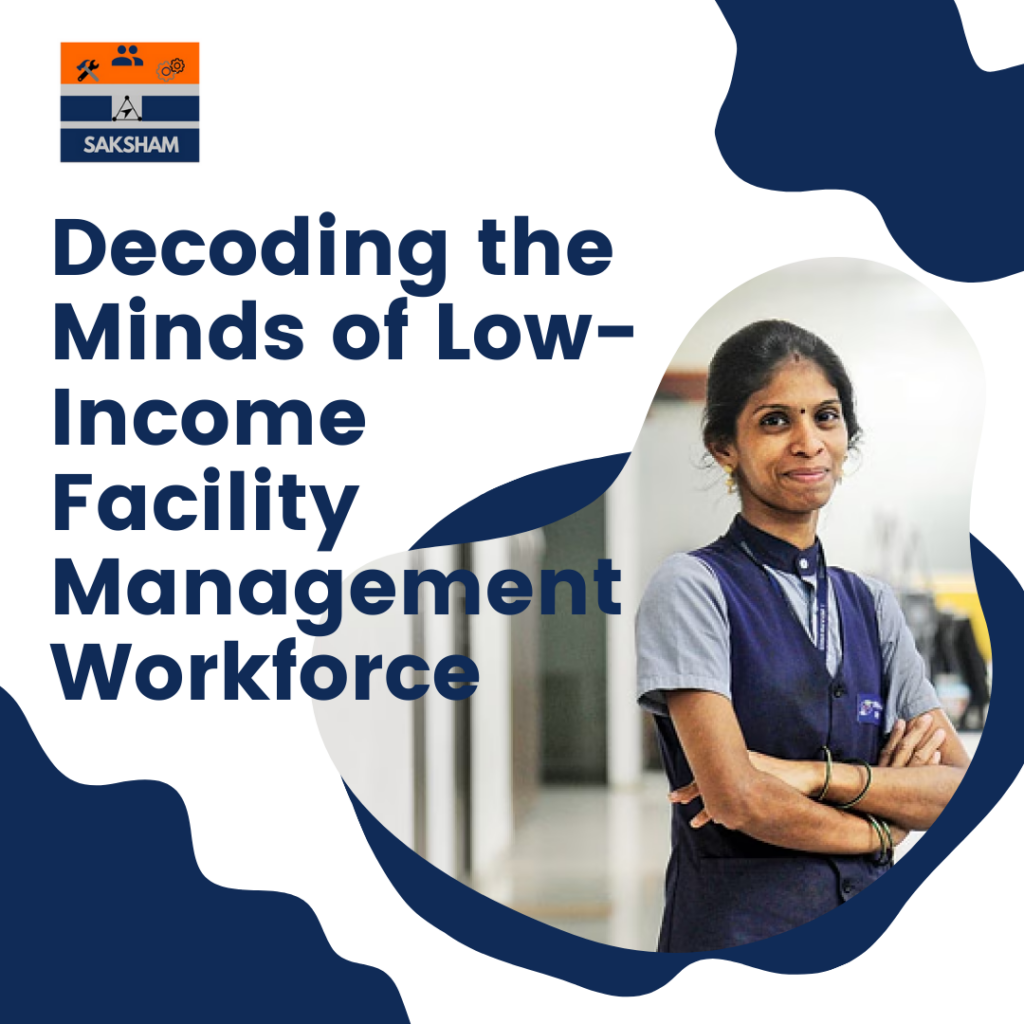
Companies working in the space of facility management need to decode each individual in their low income workforce, and understand their passions, desires, aspirations, behavioural traits, concerns, beliefs, and socio-economic conditions, to be able to extract the maximum value through them, while also empowering them in the process.
The formula is simple.
Empowerment of Low Income Workforce in Facility Management = True Pulse of the Workforce+ Customised Interventions based on the Pulse
Workforce Stability and Performance = Degree of Empowerment of their Workforce
Company’s Bottom Line Growth = Degree of Workforce Stability and Performance
And, as an apex Government of India mission, we know that such empowerment and such growth of company means growth of India’s economy, taking a major step towards ending of unemployment, and creating a “Samarth and Saksham Bharat”.
This paper is an attempt at decoding the minds of this workforce, and being able to provide glimpses of the aforementioned “true pulse” of this workforce belonging to the Facility Management industry.
This decoding is partial and generalised in nature, and we recommend every organisation reading this, to connect with us, and know how to do a micro-level decoding specific to their workforce, and accordingly get their pulse and act on the same through multi-dimensional interventions.
Background
Facility Management Industry employs a large number of workforce belonging to the low income segment. You can check out a precursor to this white paper, written in form of an article, here on our official website.
Why does Attrition exist in this workforce?
The reason of attrition is unique to each individual, and this paper provides simplified and generalised outcomes arising out of identification of such uniqueness.
Let’s first look at the ones who are performing. These workers are doing the right job and are regularly given words of appreciation by their managers. Yet, we see them leaving.
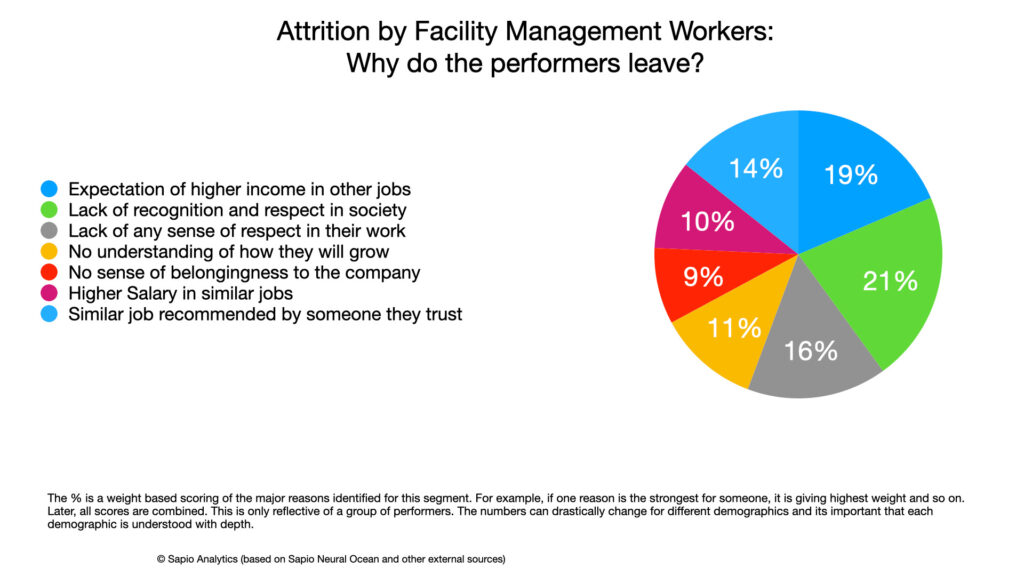
The above set of reasons provide some of the major reasons identified as the reasons for exit by performers, with a degree of significance assigned to each reason as well.
This may vary company to company, role to role, and even one demographic group to another demographic group. Such deep dive cannot be done through exit interviews alone, especially if these interviews are conducted by the same people who managed them. Such deep dive requires intervention of unbiased and personalised artificial intelligence, filled with empathy, that can extract true reasons even if the person does not provide the reason in exact words.
Now, let’s look at what makes the non-performers leave.
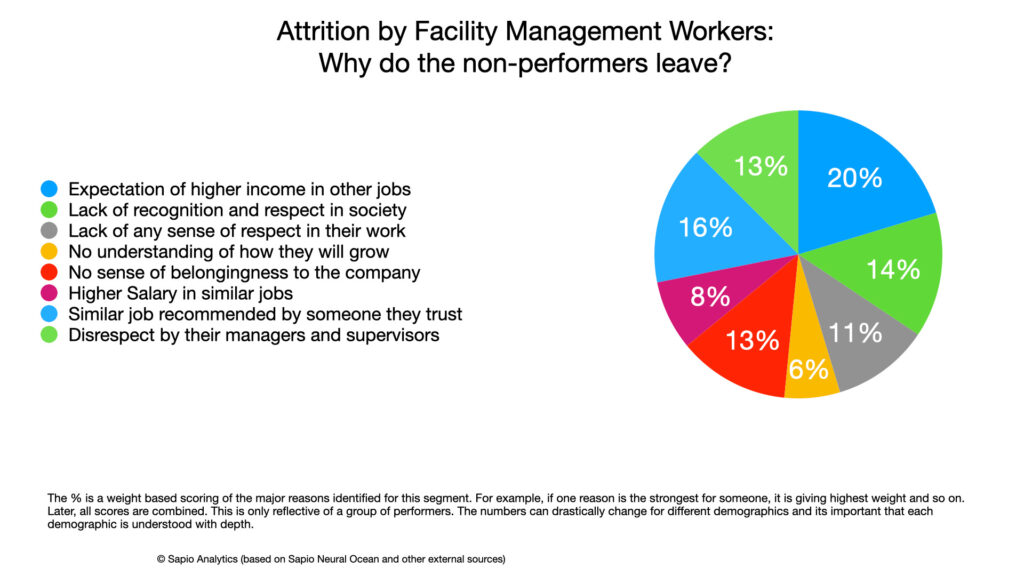
We can see here that the reasons become somewhat different, and the degree of significance of reasons see a different change.
A company may want to retain their non-performers too, while working on them to become performers. Hence, its important to deep dive into what makes them leave and what could make them stay.
Now, let’s simply take the example of one group of people, and see if their factors of retention are unique. We take the example of a facility management worker who has migrated and is currently living alone. This worker comes from a low income family back home, and is not really guided by any mentor. What makes this person leave? What factors are significant to their existence in the company? What are their sensitive areas, in the context of retention?
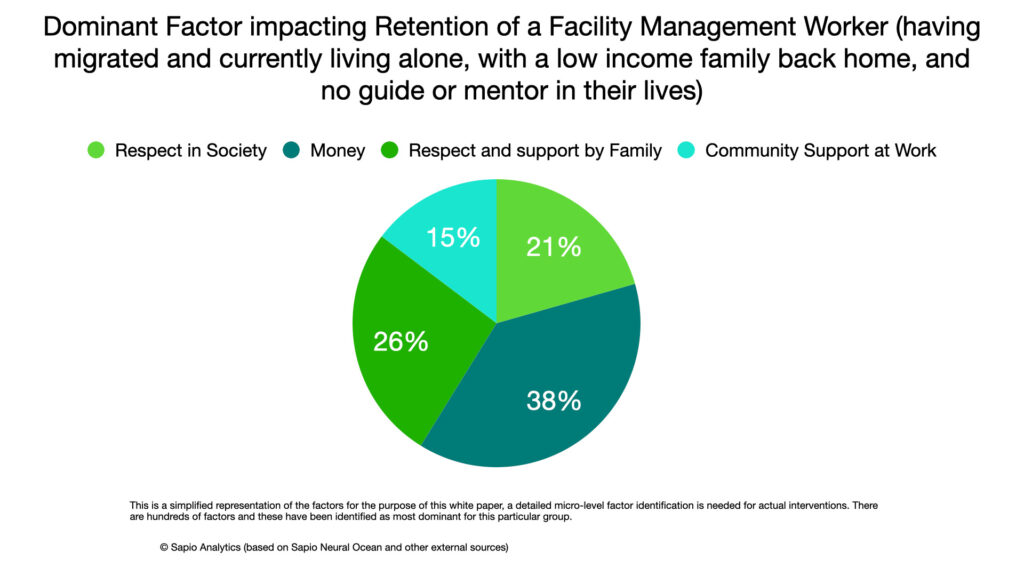
Similarly, different groups have different challenges and areas impacting their behaviour towards being stable.
Even in the above mentioned group, there are multiple smaller groups. We need to be able to know everything. For this, traits, conditions, skills and thinking of this workforce need to be decoded.
Hidden Skills and Potential Career Path of this Workforce
In this section, we look at some of the specific attributes of this workforce. It is only reflective in nature, as for each organisation, there is a specific deep dive needed.
Typically, there is a large gap between their actual skills, and the perception of various stakeholders about their skills.
Let’s look at the skills that our systems have been able to identify as existent amongst those who work in the facility management space. Interestingly, these skills get enhanced based on continued work in the industry, thus clearly underlining the importance of stability.
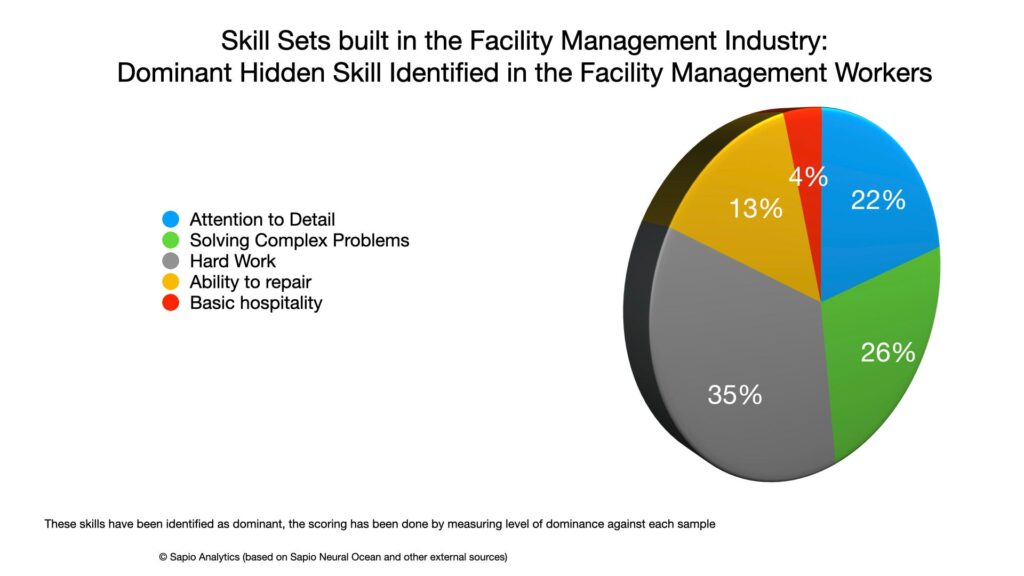
When we look at these skills, we can see how some janitors can grow on to become operations managers, and later even entrepreneurs managing facilities. We see how a housekeeping staff can become more expert in solving complicated facility specific problems, becoming a manager and growing on to become a strategic leader.
All of these are possible, if the right guidance is provided to this workforce.
Impact of Social Conditions of this Workforce
The background from which a particular individual comes, the way the society has shaped them, and the conditions that they currently live in, can help define how they may perform and where would they perform better.
For example, within facility management as well, different types of facilities are ideal for different types of people. A generalised degree of dissatisfaction across different categories of facilities can be seen in the figure below. But if we try to go more specific, we will see this distribution changing, eventually making us realise which kind of facility is ideal for which kind of individual or group of individuals, ultimately leading to higher retention and performance.
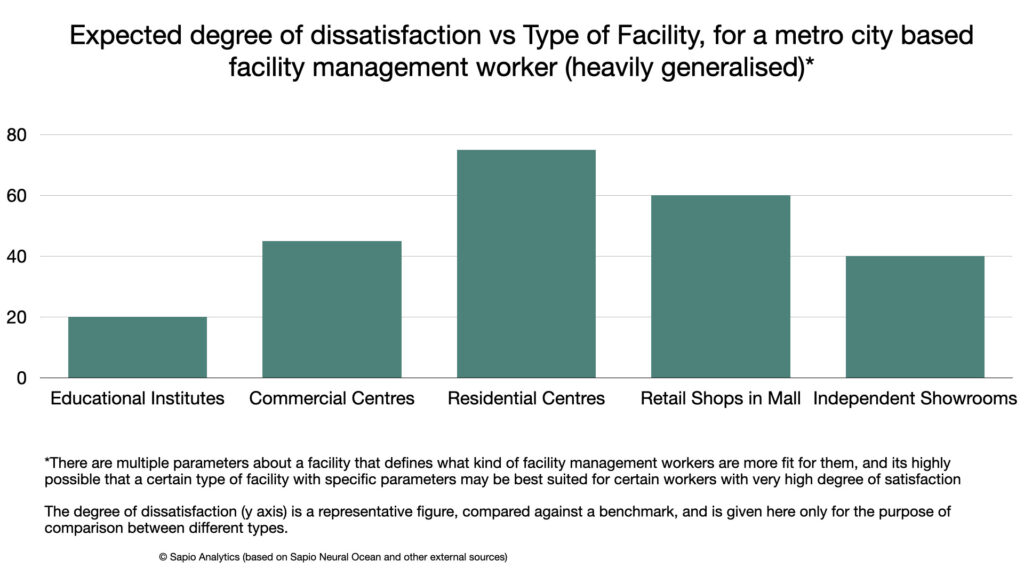
Now, let’s try to understand what are the dominant social conditions of people who are the most dissatisfied with their work (generalised for the purpose of this paper).
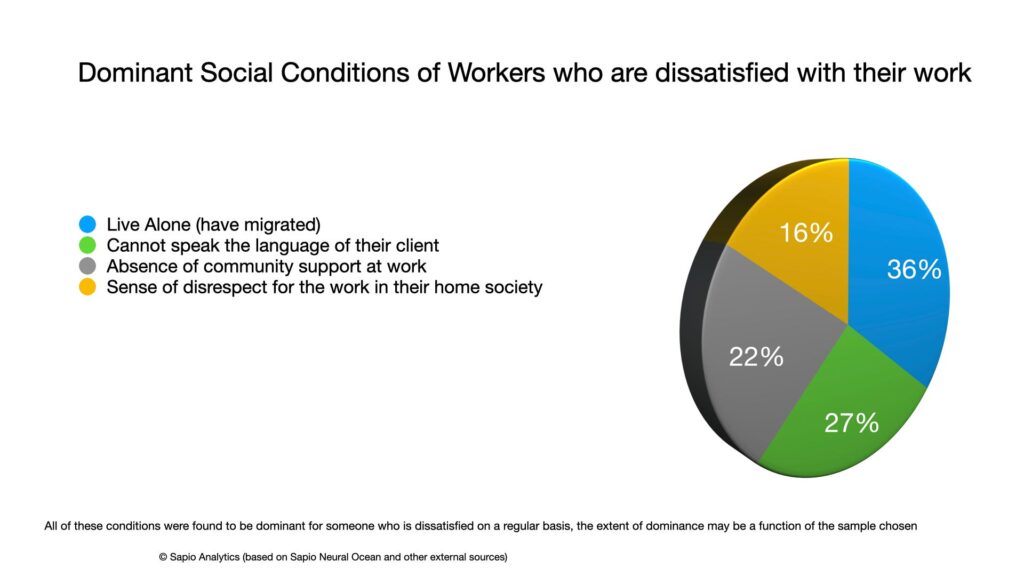
We see a pattern here clearly, the ones who are migrating have higher dissatisfaction than others, and the degree of dissatisfaction increases if they don’t speak the local language, or if their community is limited in their area of work.
This is just one of the examples showing how certain social conditions are more prone to causing dissatisfaction.
If we look at who are the most satisfied and happiest, and what kind of behaviour this segment typically represents, we will get to dive deeper into their minds!
Dive into the Minds of this Workforce
When it comes to the happiest of this lot, they typically show certain behaviours. The list of these behaviours significantly changes when we look at specific groups of people or specific individuals.
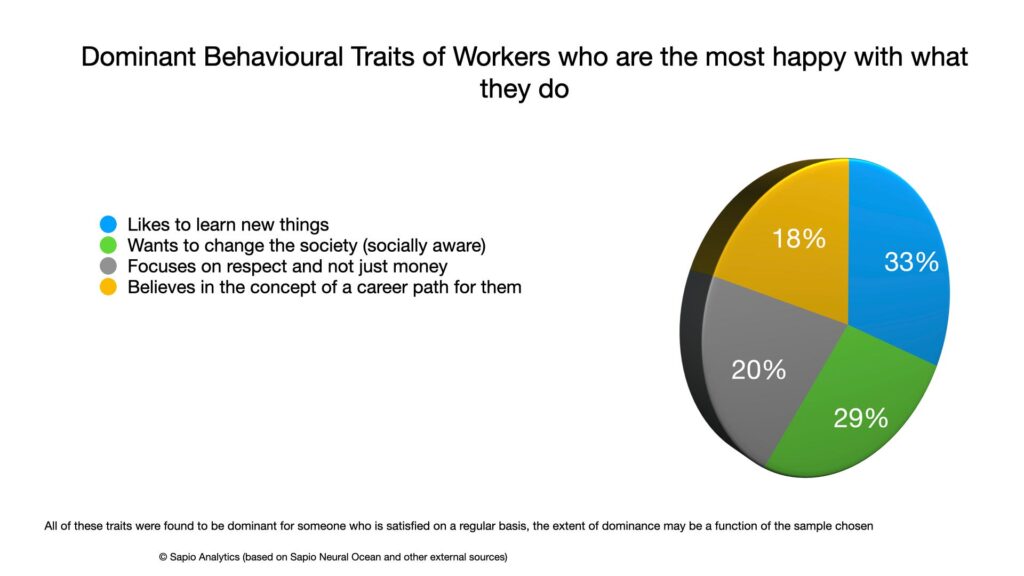
Knowledge of these behavioural traits can be used to understand what it takes to retain the best performers, and what kind of behavioural nurturing is needed in others, to make them the best performers.
We need to deep dive into the minds of this workforce to understand these traits better.
For example, we know what a particular group of people in this workforce think about, while they are at work. Such thinking can only be gathered through abstract empathetic conversations.
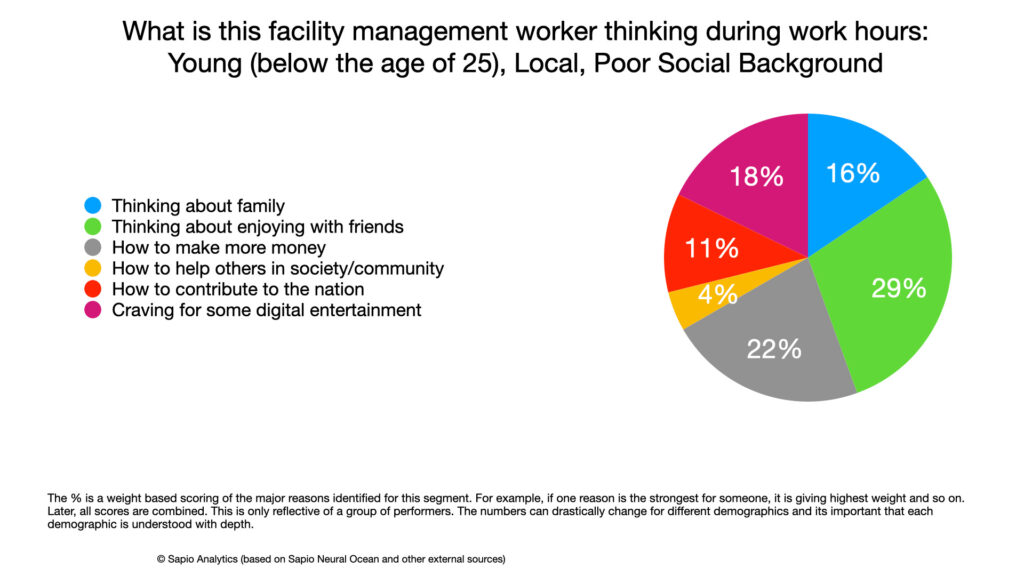
Now, further understanding of their minds happens if we are able to build additional trust with them. Let’s see what activities can help build that trust with this group.
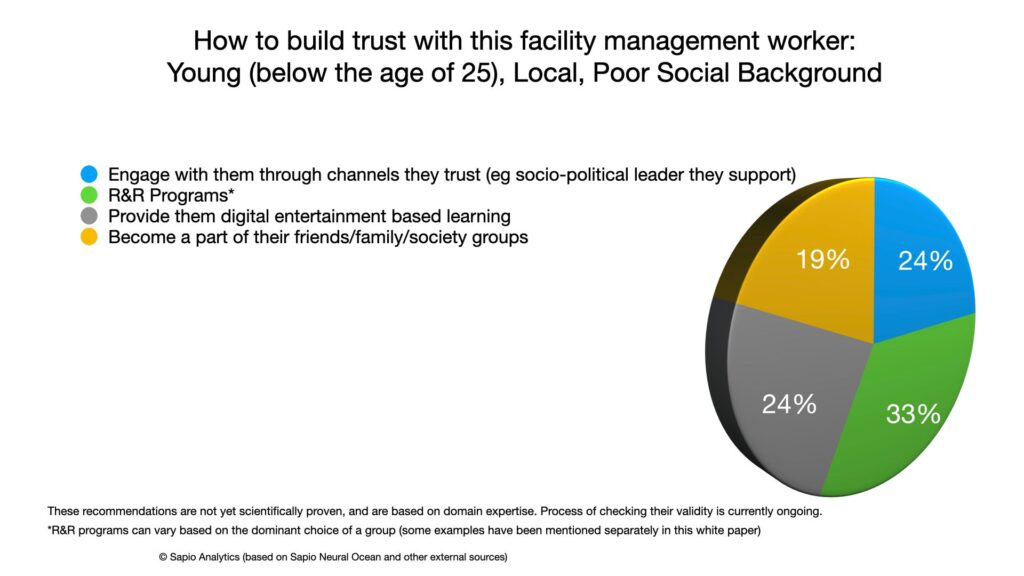
Sometimes, it’s important to know what their fears are, while they are at work, and use the knowledge of this fear to enhance the power of this trust. Here is an example of what many in this segment fear while they are working.
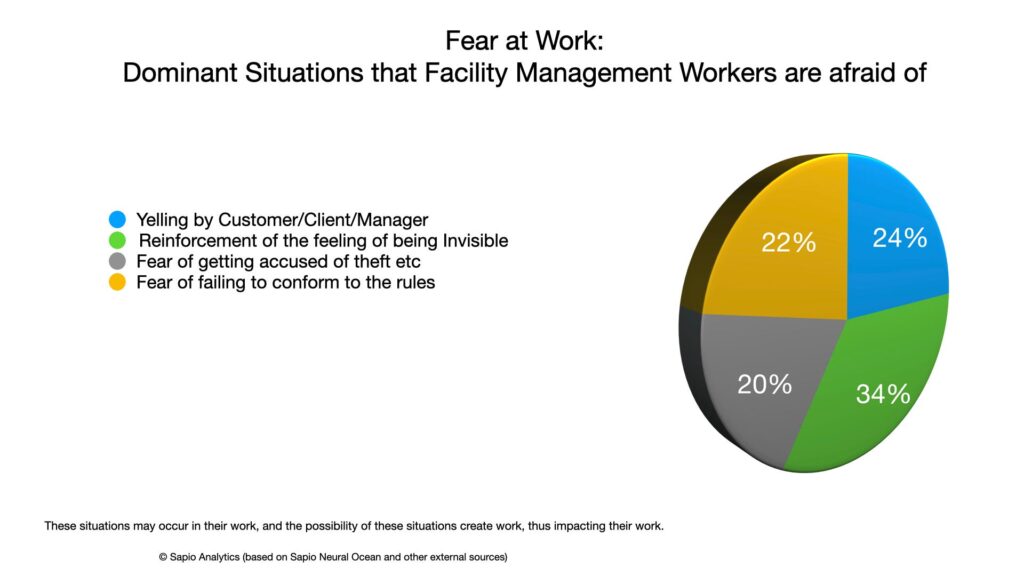
It is the responsibility of the organisation that they work for, that such fear is reduced. Knowledge of the mindset of this population; including their sensitive areas, their fears, the action ideas that induces trust, and so on; allows various company level interventions and other third party interventions to happen.
Company Level Interventions to Empower this Workforce
The company can do various activities focused on personalised empowerment of this workforce. The ideal activities that they should do should be around personalising rewards, recognition, care and appreciation.
But we know the challenges of managing this workforce in such a personalised manner.
Hence, the company should do 2 things:
- Rely on artificial intelligence driven solutions to provide scaled up solution in terms of personalised nurturing and engagement of this workforce, to ensure cost effective one on one empowerment.
- Use deep analytics to identify micro groups and plan activities based on those groups, where such activities should look customised for them. In this way, the regular R&R efforts can be converted into something much more impactful, without new efforts needed.
Here are some examples of how the rewards and recognition can be done for this workforce (the final recommendations will vary for different companies and different groups). This figure only focuses on janitors.

This is not enough.
We recommend the organisations to tie up with the Government of India, and work deeply on behavioural nurturing of this workforce, to make sure their empowerment is sustained and impactful.
Third Party Behavioural Nurturing to Empower this Workforce
Behavioural nurturing is a function of the following components:
- Nurturing of attributes that are easily nurtured, and that need to be nurtured to create a stable and performers’ mindset
- Training of secondary skills that help with a stronger thinking about their job leading to better performance and a respect for their job
This can only happen through smart conversations and use of artificial intelligence.
For example, did you know that there are certain words, which when spoken to a person in this segment, leads to happiness and trust, which forms the basis of positive nurturing?
Here is an example:
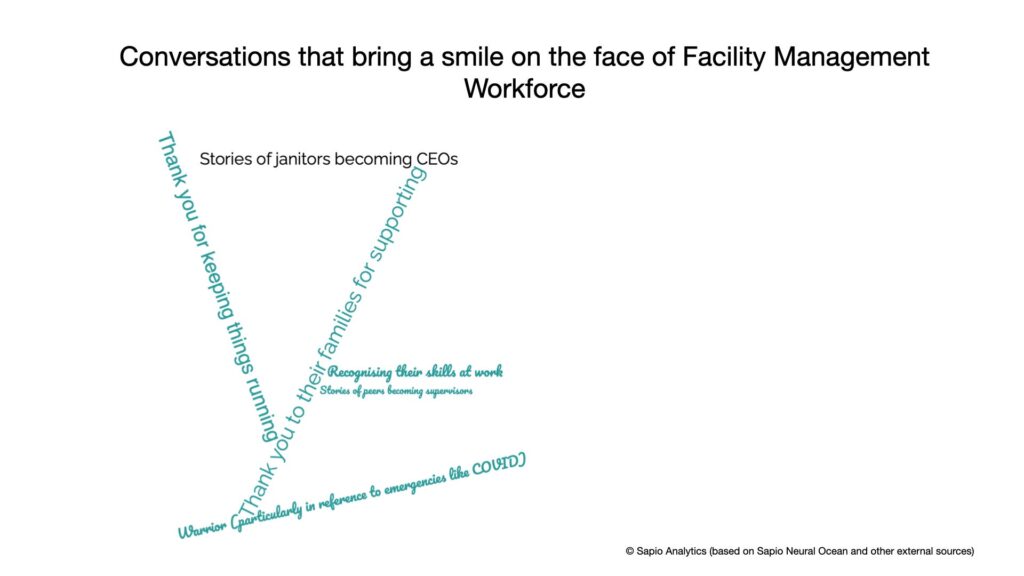
Conclusion
Low income workforce in the facility management space is the toughest to understand when it comes to different industries. The main reason is the kind of work they do, and the kind of respect they get from the society, makes them feel that they are at the bottom.
Well, that should not be the case. Their perception about this work needs to change. They should know that they will grow and have a career that they will be proud of, based on their learnings in their current job.
This can happen through a dynamic pulse on them! Let’s empower this workforce, let’s evolve the thinking of every stakeholder involved.



